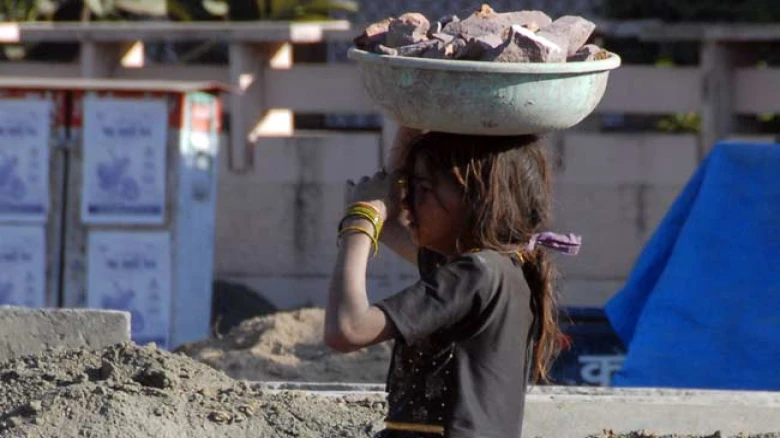Regional

Almost one in eight of all those in forced labour are children (3.3 million). More than half of these are in commercial sexual exploitation.
Digital Desk: According to the most
recent Global Estimates of Modern Slavery, fifty million people were living in
modern slavery in 2021. Of these people, 28 million were forced to work and 22
million were forced to marry.
In the last five years, the number of people in modern
slavery has increased significantly. In 2021, there will be 10 million more
people in modern slavery than in 2016. Women and children continue to face
disproportionate risks.
Modern slavery exists in almost every country on the
planet and crosses ethnic, cultural, and religious boundaries. More than half
of all forced labour and a quarter of all forced marriages occur in
upper-middle and high-income countries.
Forced
labour
The majority of cases of forced labour (86%) are found
in the private sector. Forced labour in non-commercial sexual exploitation
sectors accounts for 63% of all forced labour, while forced commercial sexual
exploitation accounts for 23% of all forced labour. Women and girls make up
nearly four out of every five victims of forced commercial sexual exploitation.
State-imposed forced labour accounts for 14% of all
forced labourers.
Almost one in eight of all those in forced labour are
children (3.3 million). More than half of these are in commercial sexual
exploitation.
Forced
marriage
On any given day in 2021, an estimated 22 million
people were subjected to forced marriage. This represents a 6.6 million
increase over global estimates from 2016.
The true incidence of forced marriage, particularly
among children aged 16 and under, is likely to be far higher than current
estimates can capture; these are based on a narrow definition and do not
include all child marriages. Because a child cannot legally give consent to
marry, child marriages are considered forced.
Forced marriage is deeply rooted in long-standing
patriarchal attitudes and practices, and it is highly context-dependent. Family
pressure drove the vast majority of forced marriages (more than 85 percent).
Although Asia and the Pacific account for two-thirds (65%) of all forced
marriages, when regional population size is taken into account, the Arab States
have the highest prevalence, with 4.8 people out of every 1,000 in the region
forced to marry.
Migrants are particularly vulnerable to forced
labour.
Migrant workers are more than three times more
likely to be subjected to forced labour than non-migrant adult workers. While
labour migration has a generally positive impact on individuals, households,
communities, and societies, this finding highlights how migrants are
particularly vulnerable to forced labour and trafficking, whether as a result
of irregular or poorly governed migration or unfair and unethical recruitment
practices.
"It is shocking that modern slavery's
situation is not improving. Nothing can justify the continuation of this
fundamental violation of human rights," said Guy Ryder, Director-General
of the International Labour Organization. "We know what needs to be done
and that it is doable." National policies and regulations must be
effective. However, governments cannot do it alone. International standards
serve as a solid foundation, and an all-hands-on-deck approach is required.
Trade unions, employer organizations, civil society, and ordinary citizens all
play critical roles."
IOM Director-General António Vitorino stated:
"This study highlights the need of ensuring that all migration is secure,
regular, and orderly. At all stages of the migration process, regardless of
their immigration status, reducing the vulnerability of migrants to forced
labour and human trafficking is primarily dependent on national policy and
legal frameworks that respect, protect, and uphold the human rights and
fundamental freedoms of all migrants and potential migrants. To reverse these
terrible trends, the entire society must come together, including through the
adoption of the Global Compact on Migration.
Ending Modern slavery
The paper makes a number of suggestions for steps
that, if implemented rapidly and collectively, would represent a substantial
step toward eradicating modern slavery. A few of these are boosting legal
protections, including raising the marriage age to 18 without exception,
enhancing laws and labour inspections, removing state-imposed forced labour, and taking tougher action against forced labour and human trafficking in industries
and supply chains. Other solutions include tackling the increasing danger of
forced labour and human trafficking for migrant workers, encouraging ethical
and fair hiring practises, and providing more support for women, girls, and
vulnerable people.
Leave A Comment